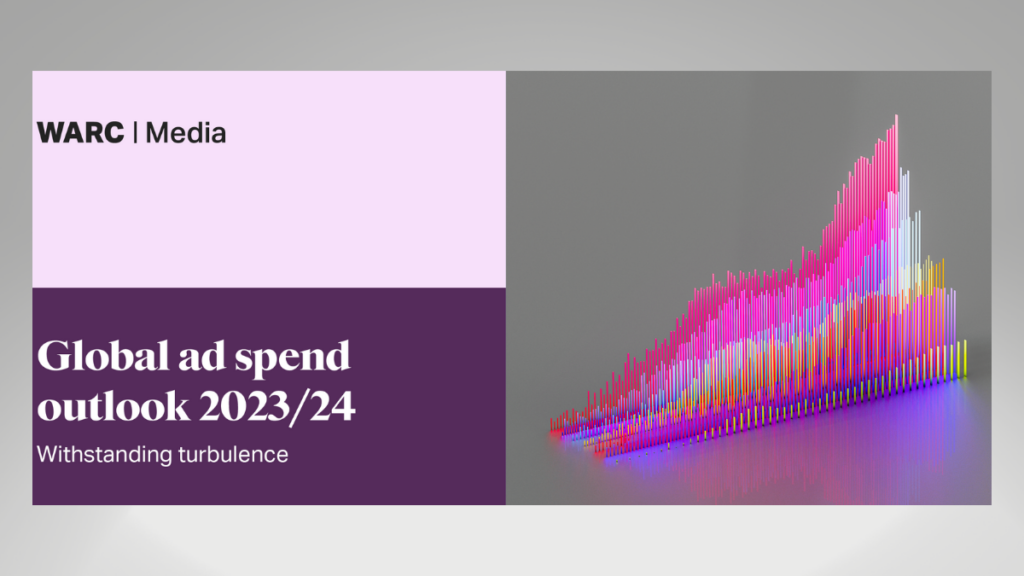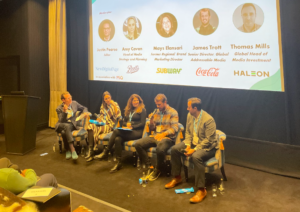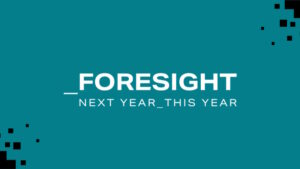The WARC Global ad spend outlook for 2023/24 has been released and it looks like there may be some good news ahead for the industry.
Advertising spend is on course to grow 4.4% this year to $963.5bn and a further 8.2% in 2024, when expenditure will have topped $1trn for the first time.
Advertising spend in Europe is set to rise just 0.6% this year, and more positively to 3.6% in 2024 as economic headwinds ease. Prospects are more challenging in central and eastern Europe though, while the UK – the largest single ad market in the region with a 4.6% share – is set to see a dip of 1.0% this year when measured in US dollars.
Meanwhile, the US is set to account for almost a third (31.3%) of global spend; the US market is forecast to grow by 7.6% in 2024. Five companies – Alibaba, Alphabet, Amazon, Bytedance and Meta – will attract over half (50.7%) of global spend this year and will consolidate that position into 2024 with a share of 51.9%.
Performance-based channels retail media and CTV are set to drive growth, and social media resurges marking a fifth of all spend.
Retail Media is set to rise 10.2% this year and 10.5% next year to a total of $141.7bn – 13.6% of all spend. Amazon is the dominant player in this space with an expected share of 37.2%.
We asked industry figures for their reaction
Ian Liddicoat, Chief Technology Officer and Head of Data Science Adludio comments:
“Expected to rise by 7.6% in 2024, the bounceback of the US ad market is clear to see in the latest report from WARC. While persistently high inflation in the UK meant that a drop in ad spend was perhaps unavoidable, brands here must not forget the importance of maintaining ad spend through difficult times. Indeed, it will serve them well in maximising the opportunity of the recovery once it comes.
“AI has been our industry’s lightning rod in 2023, injecting a new-found optimism after several years of crises. It will be a particular game-changer when it is applied in the optimisation of digital creative on the buoyant performance channels quoted by WARC’s report (Social, Search and Display especially). Global marketers who have used the past year effectively to embrace and integrate AI-based technologies in this arena are in a strong position. Having analysed to a granular degree how, where and when users have engaged with their campaigns, brands with this wealth of creative intelligence know exactly what ad iterations work with their customers. Marketing teams who meanwhile have yet to explore AI’s power will soon be left behind.”
Nadia Gonzalez, Chief Marketing Officer, Scibids comments:
“While the outlook varies across markets, the fact that ad spend has hit the $1 trillion mark reflects a renewed confidence from brands in their budgets’ ability to drive business outcomes.
“With half of ad spend still going towards the Walled Gardens, however, brands should make the most of the upswing to investigate opportunities on the Open Web. Strengthened by the growing popularity of AI, this technology promises a new era of digital efficiency with the activation of proprietary and measurement data outside of the Walled Gardens. Offering a lot of use cases and adaptable to fit the specific needs of brands, customisable AI in particular is unlocking a new level of growth and scale for businesses.”
Philip Acton, UK Country Manager at Adform
“With persistently high inflation in the UK, the WARC report’s projected dip in market ad spend is unsurprising. During this time, brands not only need to be meticulous, they need to ensure they are working with partners that can extract the most value from their budgets.
“The objectives here should be two-fold. Brands should be leveraging solutions that can continue to target relevant audiences following the imminent deprecation of third-party cookies. They should also facilitate omni-channel campaign execution, including Connected TV environments. Indeed, it is clear that this will be a particularly key channel for brands in 2024, with the WARC report indicating a growth of 12.1% next year.”
Julia Bielecka-Dąbrowska, Head of Sales Development & Efficiency, RTB House comments:
“Given ongoing economic spending has been impacting the industry hugely over the last year, the fact that advertising spend across the globe is still on the rise, with a few exceptions, should leave marketers feeling positive about the year ahead. As ad spending goes over $1.trn, brands must use the opportunity to engage with customers as effectively as possible if we want to continue to drive this upward trajectory.
“AI, in particular Deep Learning, will play an important role in future campaigns across the industry. Brands utilising this technology will be able to capitalise on hyper-targeted, tailored advertising that reflects client needs wherever possible, above and beyond what human capabilities. With the cost of advertising on the rise, budgets are being increasingly squeezed. In order to spend little but succeed in the long run, brands should continue to look for ways to maximise the possibilities within advertising through AI.”
Thomas Ives, Co-Founder and Director at RAAS Lab
“The most recent WARC report indicates a decline in the UK advertising market, likely attributed to the ongoing issue of high inflation. During these tricky economic times, budget efficiency must be a heightened focus for brands.
“Employing AI to enhance budget has emerged as a favourable strategy for cutting down ad wastage. By utilising advanced technology, brands can evaluate optimally performing creative and identify the most relevant digital platforms for specific consumer audiences. This empowers brands to increase budget efficiencies through better targeting resources, while simultaneously minimising spend on ineffective ads. In turn, securing the long-term sustainability of advertising efforts in an ever more competitive market.”
Graham Tricker, VP Sales UK at LiveRamp
“The findings of the most recent WARC report align with our recent research on the priorities of senior UK marketers during Q2 2023. In particular, the paramount status of retail media amongst brands currently. The report shows that retail media is set to rise by 10.2% in 2023 and a further 10.5% in 2024, totalling $141.7bn. This surge in retail media spend underscores the escalating influence of data collaboration – that is, bringing together data from internal and external sources to unlock valuable insights.
“Noting that the report projected the UK ad market to dip, likely due to persistently high inflation, marketers must not forget the importance of maintaining ad budgets through a crisis. Indeed, previous experience has shown those that prioritise their marketing spend during difficult times emerge stronger.
“Those brands who are investing in retail media, and other strategic partnerships underscored by data collaboration, will be in a prime position to optimise their marketing strategies based on the comprehensive insights these partnerships provide. Marketers who have not yet started to align their organisations in collaborating internally and with data partners, must act now or face falling behind.”
Andra Mititelu, Business Director, Audience Platform for Advertisers at Permutive, comments:
“It is encouraging to see that ad spend has risen 4.4% this year, and that expenditure is on track to top $1trn for the first time ever. However, given the economic challenges affecting the UK, it is unsurprising that the nation is seeing a 1% dip. With addressability in the open marketplace (OMP) at just 30%, prioritising spending where it is most effective will be a major focus for the next year. Advertisers seeking to grow their market share must stop spending 90% of their budget to reach 30%, and focus on the remaining 70% of consumers. “Working in a more direct capacity with publishers, at scale, will be key to opening up these audiences for advertisers, maintaining transparency and control, and ensuring that the premium inventory they can’t find in the OMP is fully accessible. Five companies, not including Google, capitalise on over half of ad spend already. Adding Google into the mix, plus other large social platforms, we get a monopoly of over 80% of ad spend being controlled by a few companies. Advertisers must evaluate their reach, the quality of their placements, and whether they effectively reach target audiences where they spend their time.
All companies quoted are clients of Bluestripe Communications, part of the Bluestripe Group, publishers of New Digital Age









